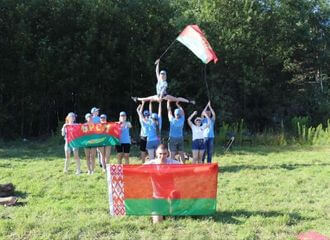На русском языке:
Мнение. Химик-исследователь Сергей Бесараб о влиянии реагентов на конструкции мостов
На беларускай мове:
Меркаванне. Хімік-даследчык Сяргей Бесараб пра ўплыў рэагентаў на канструкцыі мостаў
Siarhei Besarab, a research chemist, a former researcher of the Academy of Sciences, dismissed in 2020 for political reasons, and the author of the telegram-channel «Laboratory Journal of the khabrachemist,» published a post on his Facebook page where he told the real reasons for the destruction of the bridge on Nemiga. According to him, one of the main reasons is «chloride attacks,» reagents with a high salt content get into reinforced concrete and destroy steel rebar. We quote his words unchanged.
Among the various reasons for the destruction of concrete structures, one of the most important are chemical, among the chemical the most aggressive are «chloride attacks» or the impact on reinforced concrete of chloride ions.
Siarhei Besarab / Photo from Siarhei's private page
But concrete additives are a drop in the bucket, compared to chlorides from road mixes. This is a problem in Belarus, but Minsktrans officials have repeatedly threatened that in the coming years, there will be no replacement for salts, let environmentalists, doctors, motorists, ordinary people with spoiled shoes sound the alarm. And no one ever talked about the effect of salts on concrete structures in my memory. Although among the same English-speaking researchers, the concept of «chloride attack» is most often used in relation to bridges, interchanges, overpasses and other reinforced concrete products.
Getting into concrete due to diffusion and capillary effects, chlorides first accumulate on solid objects (aluminate phases of cement or finely dispersed mineral residue formed from the combustion of fuel in the engine). Intermediate accumulation is carried out due to the formation of chloraluminates, after which the gradual release of chloride ions and the destruction of the passivating protective layer in the steel rebar happens.
- Fe²⁺ + 2Cl⁻ → FeCl₂
- FeCl₂ + 2H₂O → Fe(OH)₂ + 2HCl
Chlorides «cut» quickly steel rebar and it is difficult to determine this, because most of the adopted methods of control of metal structures determine the average intensity of corrosion, without isolating anomalies. Destruction, on the contrary, almost always begins with anomalies
What to do about all of this?
Refuse to use chlorides for additives in concrete, to abandon the spreading of salt where there are reinforced concrete structures. It is necessary to move away from cheap salt and instead of chemical anti-icing additives that lower the temperature, use materials that increase friction. New approaches are needed, otherwise, bridges will continue to collapse. Obviously, there is a need to replace road-bridge-building technologies of the middle of the last century, but I do not know how to do this in the current situation…



